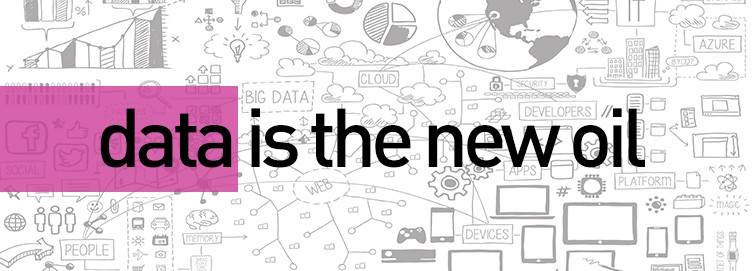The former CEO of Intel, Brian Kzranich said last month, “Data, I look at it as the new oil. It’s going to change most industries across the board. Oil changed the world in the 1900s. It drove cars, it drove the whole chemical industry,” Krzanich explains.

Kzranich has shaped Intel from a chip manufacturer to a data centric enterprise making hardware better one PC at a time. With the most valuable companies in the world being data aggregators and market makers (Alphabet, Facebook, and Amazon), he has a point.
The comparison of data and oil isn’t perfect, though. One of the many differences between oil and data, besides being able to touch it, is that data is more valuable when shared, aggregated and analyzed. Currently, it’s being shared to drive better and better targeted advertising to support the most valuable companies in the world. Oil, often resold, does not become more valuable with algorithms.
The big question surrounding data sharing business models is the tipping point. When the value of each record becomes more valuable than the revenue earned for sharing it, or at least sharing it with third parties. So that begs the question, at what costs are companies willing to ensure their vendors are properly securing their customers’ data and when does it become more valuable to keep it in house?
KASPERSKY LABS REPORTS, THE COSTLIEST DATA BREACHES STEM FROM LOSS OF DATA AT A THIRD PARTY.
With the most costly breaches stemming from third parties, we are starting to see the negative effects of “shared data” business models. Even with the best security protocols in place, sharing data with partners increases complexity. In fact the top motivation for investments in IT security budgets is the growing complexity of IT, according to the Kaspersky Lab report.
Top 3 Costliest Incidents for Enterprises
- Targeted attacks ($1.64 million)
- Incidents affecting IT infrastructure hosted by a third party ($1.47 million)
- Physical loss company owned media devices ($1.41 million)
Top 3 Costliest Incidents for SMB
- Incidents affecting IT infrastructure hosted by a third party ($179K)
- Incidents involving non-computing connected devices ($148K)
- Incidents affecting virtualized environments ($146K)
Companies of all sizes are vulnerable to attacks and as third party vector attacks continue, securing data organizations are passing through to vendors will be immensely important.
WHAT CAN YOU DO TO ENSURE YOUR THIRD-PARTIES ARE SECURING YOUR DATA?
The reality is, not a whole lot outside of current vendor risk management best practices. Here are a few steps to take that do not require an on-site audit.
- Review security questionnaires, collect supporting security documentation and resolve identified gaps with vendors in a timely manner.
- Collect SOC reports, penetration tests and certifications by auditors for specified vendors based on risk.
- Use web application scanning tools, business health risk indicators and other data feeds to verify confidence in your vendors business operations.
Thirs-party risk management is an exercise in trust. You have to put in the time to know who they are, what data they might have access to and what you need from them to feel confident in continuing a relationship. As you might know, ThirdPartyTrust can help with the work that takes the most the time; collecting it all from your third-parties. Through automation, data partnerships and security expertise, we can ensure you get all the information you need to confidently report on vendor risk.
For more on how ThirdPartyTrust can help understand and manage third-party risks, request your demo now:




